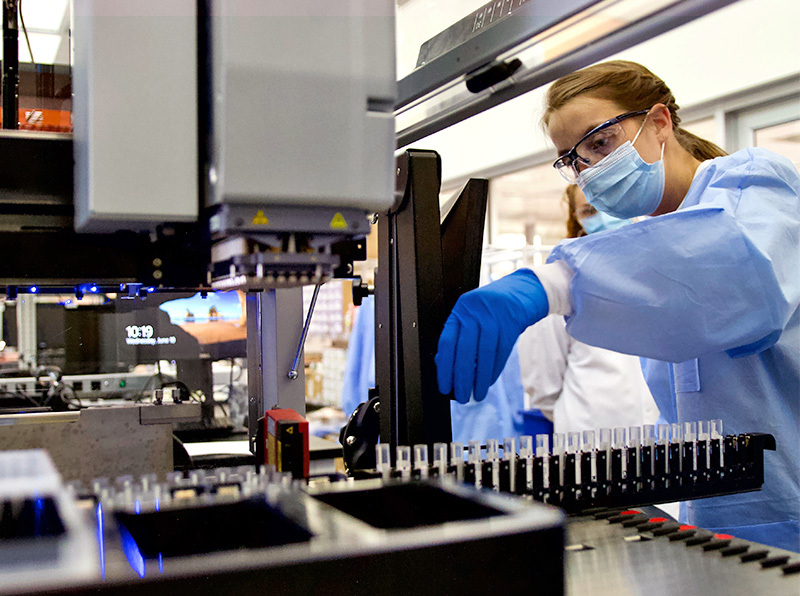How the Broad’s Genomics Platform ramped up human and viral sequencing and kept processing COVID-19 tests, all at the same time
While the team launched new COVID-19 diagnostic and pathogen surveillance capabilities, they also analyzed more than 120,000 human genomes in 2021, with no slowdown in sight.

Credit: Scott Sassone, Broad Communications
Catie Ramnarine (left) and Ally Day (right) in the Genomics Platform's sequencing lab, which increased the scale and pace of human genome sequencing in 2021.
















